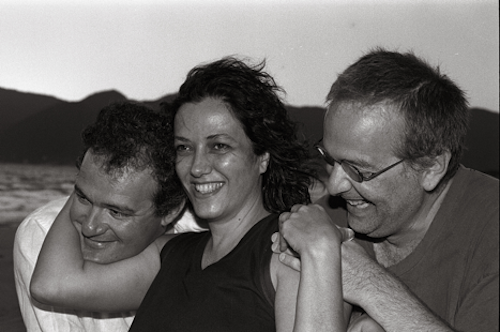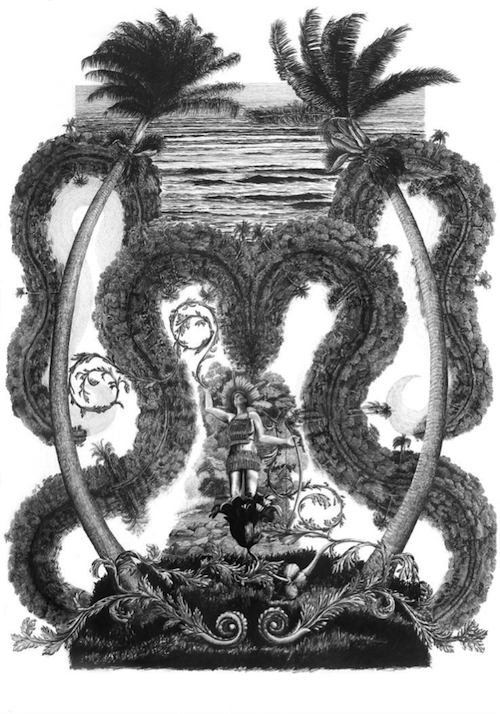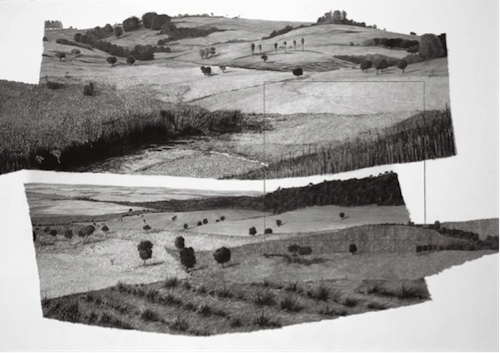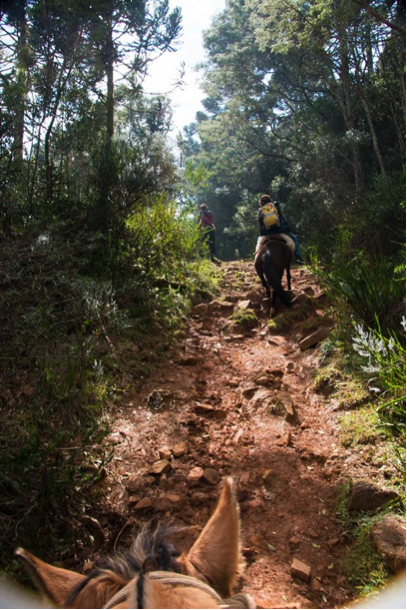Josely Vianna Baptista in Conversation

Josely Vianna Baptista (Curitiba, Paraná, Brazil, 1957) has written several books of poetry and prose, including a book for young adults which received the VI Prémio Internacional del Libro Ilustrado Infantil y Juvenil del Gobierno de México. She has translated more than one hundred books, including the complete poetry of J.L. Borges for the multi-volume Obra Completa (Globo), for which she was awarded the prestigious Prêmio Jabuti in 1999. Translations of her work were included in the anthology Nothing the Sun Could Not Explain: 20 contemporary Brazilian poets (eds. Michael Palmer, Nelson Ascher & Régis Bonvicino, Sun & Moon Press, Los Angeles, 1997), and in The Oxford Book of Latin American Poetry (eds. Cecilia Vicuña & Ernesto Livon-Grosman, OUP, 2009). On the Shining Screen of the Eyelids (Manifest Press), a collection of her poems, and Florid Pores, a poem in six cantos (1913: a journal of forms), have been published in the United States. She is well-known throughout Latin America as a poet and translator.
On Josely Vianna Baptista
Josely Vianna Baptista is one of Brazil’s most important poets. As Malcom K. McNee notes, Baptista’s work “…involves a direct engagement with some of the formal legacies of Brazilian concrete poetry…[with] legacies of the Ibero-American baroque, rooted in the discursive and cultural dynamics of New World discovery and colonial formations…[and moves] toward a reformulation of aspects of Indigenous cosmology and poetics.” I first came upon Baptista’s work through On the Shining Screen of the Eyelids (trans. Chris Daniels, 2003) and later through the publication of Florid Pores (trans. Daniels, 2005) in the journal 1913. At the time, I was looking for ways to articulate the irreconcilabilities of my hometown, Miami—its crushing together of disparate bodies and traditions, its beauty and nihilism, and its pitch of violence and the sublime. Baptista’s images, her “aeration” of the text, her visionaries “on the threshold, engendering centaurs,” helped me feel the potentials for a language that could simultaneously address the southern hemisphere’s colonial inheritances, its natural extravagance, and its hybrids and margins. Below, Baptista talks about her work in detail and gives some insight into her current thinking and projects.
—Robert Fernandez
***
Robert Fernandez: Tell us about your most recent book, Roça barroca.
Josely Vianna Baptista: Roça barroca is a book that valorizes the incorporation of Amerindian cultural heritage into Brazilian literary tradition. As I produce my work according to certain paradigmatic cultural contexts, it finds an echo in the “mestizo poetics” Cecilia Vicuña writes about in the Oxford Book of Latin American Poetry. In Roça barroca, I seek a voice pulsing between high and popular dictions. I seek the point of inflexion wherein different perspectives and languages, here taken as poetic voices in dialogue, synthesize in hybrid intersections. Here, poetic prospecting opens to the free intersection of myth, narratives, memory, dispersions; the poems do not so much as make use of, but seek a dialogue with the sophisticated musical patterns of the indigenous cantos, on that threshold where the archaic and the modern meet. It is a small act of bringing our poetry closer to Amerindian poetry, to a ground where these “tongues” and “languages” are in dialogue. Finally, as I wrote in a letter to the anthropologist Bartomeu Melià: “I hope that in this work I have done something to reveal—to Brazilians and readers of Portuguese—a little bit of the riches of Guarani culture and their sacred ‘oratures’.” (I may also hope to reveal something of this to Anglophones, due to a magnificent [though not yet published] translation of the book by Chris Daniels). And, since exegeses and exegetical translations into Spanish of the cantos have already been produced by the brilliant pioneers León Cadogan and the aforementioned Melià, in this work I’ve tried to work more carefully with the specifically poetic elements of the cantos. Collated with the Spanish version, my translation mostly presents variations proceeding from a translation practice which in this case values the almost ideogrammatic materiality of the indigenous language, instead of obeying the sometimes paraphrastic solutions in Castilian. The attention to form results in a “writing exercise”: I attempt to infuse Portuguese with the “ancestral whisper” of the Guarani language.
The book will soon be published in a Mexican edition, as part of the series Adugo biri: etnopoéticas. The cover image by Francisco Faria, which can be seen below, is entitled "Mare magnum: America whips and hoists her grotesche fringe."

NO GESTURE
WITHOUT A PAST
NO FACE WITHOUT
THE OTHER
NENHUM GESTO
SEM PASSADO
NENHUM ROSTO
SEM O OUTRO
I think I started to walk the invisible winding paths of Roça barroca before I learned to read and write. Ever since I was a little girl, I’ve loved “inventing” and “publishing/editing” even the most banal event: a lonely ant balancing on a dry flame tree pod, for example, sailing after a storm in the torrential flood that overflowed the curb of a small town in the interior of Brazil, where I spent most of my childhood, that ant floating on the flood that carried in its vortex clumps of red clay, speechless dry twigs and the shock of shipwrecked flowers, them that turn and half emerge and submerge gyring in eddies, these were for me one whole event, (e a foz de um rio, o riso de um menino, o óleo no miolo do noz [and the mouth of a river, the laughter of a boy, the oil in the kernel of the nut]), which I transformed into a cinematographic epic made of takes both real and imaginary, and then—thrilled by the rumoring of inaudible rivers, without knowing yet that I lived above the world’s largest transfrontier source of underground fresh water, the Guarani Aquifer—I sat mulling over those things which had been beneath that blood-colored earth, and which, with the heavy rains, had become primeval clay.
Today my memorable island is under the waters of the Capivara Dam, which, when in the late 70s, it inundated a great portion of the most fertile lands in the world—beside the lands at the banks of the Nile—and caused the historic, disintegrating migration of farm workers to the peripheries of the big cities. I witnessed an irreversible erasure of natural and cultural diversity. Little by little, the landscape began to fill with encampments of landless workers at the roadsides, living in improvised huts made of sheets of black plastic. This drawing by Francisco Faria depicts a panorama of the Pontal do Paranapanema, where we went with our little son to meet one of these groups in the zone of conflict.


RF: Could you tell us about your early work?
JVB: My first book of poetry, Ar [Air], came out of my attentiveness to the Baroque and to indigenous mythopoetics. Rooted in a sensualization of language, at once lyrical and experimental, I proposed, by means of blocks of “aerated” texts, a “sensory strophation” inspired by the Guarani concept of “word-soul” (ñe-eng) and the interdependence of breath and perception.
Concerning the influence of the Baroque on my work, it is important to note that I started writing the poems in Ar a little before I began to translate José Lezama Lima’s monumental novel, Paradiso. When I was in my early twenties, I plunged into the macro- and microphysics of the Lezamescan text with such impetus that it took quite a while for me to surface. His notions of imaginary ages, concurrent chance, history woven by images, “poetics of counter-conquest,” really all of his singular world-view and writing sowed seeds in the untouched soil of my language. I’d already put one foot into this territory where language is sensualized and ritualized, at times transforming into a character in its own spectacle, in part because of my restless thinking about the Guarani concept of “word-soul”; partly because of my curiosity about ritual rhythms and their impact on perception; and partly through my studies of poetry and ekstasis, among other things. When Lezama suddenly emerged in front of me, things consolidated and began to unfold.
In the same way, the vitality of the Brazilian concrete poets had an enormous impact on my work as a poet and translator. When I was twenty, more or less, I discovered the “verbivocovisual Gestalt” of Augusto de Campos—it was as if the voltage of a “thousand suns” (Mayakovsky) projected down into the moment’s murky poetic sea. His exemplary translations of poetry reflect his oriflamme, which is also Webern’s—Non multa sed multum (Not quantity, but quality)—a criterion I see present in the synthesizing complexity of his best poems. Augusto de Campos’s persistent creative circumspection, which results in a measured daring, revived my dream of a “trans-mediatic revolution”—I want to bring together, quite unavoidably, Padre Antonio Vieira and Guimarães Rosa. I have never considered the Baroque and concretismo to be mutually exclusive (in my mind, they are convivial). Néstor Perlongher, the Argentine poet and a close friend of mine, was one of the first to comment on this aspect of my poetics. It is no coincidence that for decades the Baroque had been the process of critical re-appropriation by Latin American literary modernity, of which I believe Lezama (and his Paradiso) to be the greatest representative. It is very worth noting that in 1963, three years before the publication of Paradiso, in Brazil, Haroldo de Campos had already begun to publish the “lyrico-baroque” fragments of his Galáxias (Galaxies), a book I consider to be among the most inventive my culture has produced—it certainly divided the waters in contemporary Brazilian poetry!
Curiously, the aeration of my poems always was linked to a concretist process: the principal motive was to de-automatize the reader’s gaze, to allow the body to participate in the reading, with its own sense of duration. (At the time, I thought I should suggest that the poems be read aloud at least seven times!—when I was revising the book for publication, I considered this injunction to be neophytic ingenuousness, and cut it.)

Finally, I’d like to say that the concept of word-soul—central to Guarani mythology—is one of the most complex, most enrapturing discoveries I have ever made; this discovery is at the origin of my first poems. (Ayvu [human language], ñe’êy [word] and e [to say, to speak] hold the double concept of “expressing ideas” and “divine portion of the soul”). The poems of Ar exist in that place. Their own formal configuration (not only visual, obviously), can on its own suggest a more sensorial reading.
RF: How did you first start collaborating with Francisco Faria?
JVB: Our first collaboration was Corpografia, its title suggested by Severo Sarduy’s book, Written on a Body. That book introduced a holistic comprehension of the notion of the body (the maintaining of that focus is evident in the work we developed: more than holistic, there was even a psychic “bias” in the way nature and body came into relation; this bias, or slant, or pattern, opened a dialogue with the world views of Amerindian peoples).

Starting with Corpografia, these matters took on greater relevance; they also deepened for us. In a certain way, we inverted our focus: what once was “topic”—an object—started to become the subject, the prime mover of our work together.
We left behind a vision of nature and culture (still from the point of view of Western culture), and the incorporation of new non-Western paradigms, and entered into a germination of visions, themes and perspectives coming out of an in loco livingness of energies circulating through this great “rediscovered” territory of Brazil and Austral America.
This new geography, the geography of the Brazilian woodlands, of the interior countryside, of the Amerindian universes—this pluritemporal, pluricultural Baroque—became, in our work, less an answer and more a proposal, with evident synergies pulling together those themes with ultrabaroquizing prospects of other Latin American avant-gardes, especially the cultural and philosophical vision of the oft-mentioned Lezama Lima.
I’ve always loved the dialogue between different forms of art; it is a play of mirrors, where reflections and refractions create an invisible place, so to speak, neither poem nor work of visual art, but an invisible place filled with the pulse of other senses, other meanings.
Francisco Faria: “there is not only the universe of exhuberant nature; there is also the universe of cultural hybridisms, aesthetic polymorphisms, the universe of an unparalleled historical, cultural and natural grandeur which are not sufficiently emphasized in the mostly urban-littoral character of Brazilian Modernism.”
A collection of my poems with art by Francisco—On the Shining Screen of the Eyelids—was published in the U.S. (Manifest Press, 2003), in an excellent translation by Chris Daniels. It is my luck, and my honor, for Chris to be my “other voice” in English.

I’m always looking through a pair of binoculars which has one lens turned to the past, and the other to the future. Therefore, I’m always coming and going and often retracing paths already walked, I follow and pursue buried traditions, Ibero-American cultural history, the sign of displacements—no wonder I love our old story of the statues in marble and myrtle: the marble endures, always the same, immutable, while the the statue carved in the myrtle keeps growing out the proliferant riot of her anarchic branches.

The Primordial Rites of Colibri
1.
Our first Father, most high and supreme,
blossomed all alone out of
the dark chaos of the beginning.
2.
The celestial soles of his feet,
the brief arch of his seat,
blossomed, all alone, standing straight,
out of the dark chaos of the beginning.
3.
The glow from his sky-eyes,
his divine ears,
his celestial palms raising his scepter,
his celestial hands with flowering buds
opened Ñamanduí, burgeoned
out of the dark chaos of the beginning.
4.
Upon the brows of the god,
the flowers of his cockade,
—eyes of dew.
About and amid the corollas of the sacred cockade,
Colibri, the original bird,
hovered and flitted.
Note: The Mbyá-guarani Ayvu Rapyta First Canto, in Mbyá-guarani language, Portuguese (translation by Josely Vianna) and English (translation by Chris Daniels)
RF: What have you been working on recently?
JVB: At the moment, I’m starting a series of experimental works developed out of expeditions into Brazilian landscape and history. Na tela rútila das pálpebras, the first of these, is based on the history and landscapes of the Campos Gerais region of Southern Brazil. With the support of Rumos Itaú Cultural, I traveled through the region accompanied by collaborators, including my son, Pedro Jerónimo, who photographed the expedition. Literary and historical texts, photographs, drawings by Guilherme Zamoner, digital art and iconography are combining to reinvent symbolically the part of Brazil I come from, where my ancestors lived, the site of an important period of cattle husbandry in the 18th and 19th centuries.

It is a landscape of wide horizons, plateaus, groves, and forests of araucária pines. The mixed ombrophilous forests of this region are all that remains of one of the oldest ecosystems on the planet, whose origins can be traced to the Triassic period, and which flourished during the Late Jurassic, on Gondwana, the super-continent which included most of the land which today forms the continents of the Southern Hemisphere.

Today, the great plateaus are cut by a succession of imposing canyons and rock formations. These are an important part of the region’s identity as landscape. This is where the cattle-raising scene unfolded, that incessant movement of the herds from the place where they were raised to the markets. The movement populated regions once sparsely populated, and created a singular culture: a network of rough trails which put into contact, not always peacefully—witness the name of Rio das Mortes (River of the Dead) in Paraná—indigenous peoples, European colonizers and South American creole populations.


Digital publication will be the basis for our impressions of the journey within this cultural ground, within these landscapes, the roots of my sensibility. The main reference in Na tela rútila das pálpebras [On the shining screen of the eyelids], as the title suggests, is the “gaze” itself and the forms by which this gaze–in dreams, in the fiction of history or under the noonday sun–destroys, creates and sees meaning(s).
—September 2015
Special thanks to Chris Daniels for translating this interview.
Poet and editor Robert Fernandez was born in Hartford, Connecticut, and grew up in Miami. He earned ...
Read Full Biography

